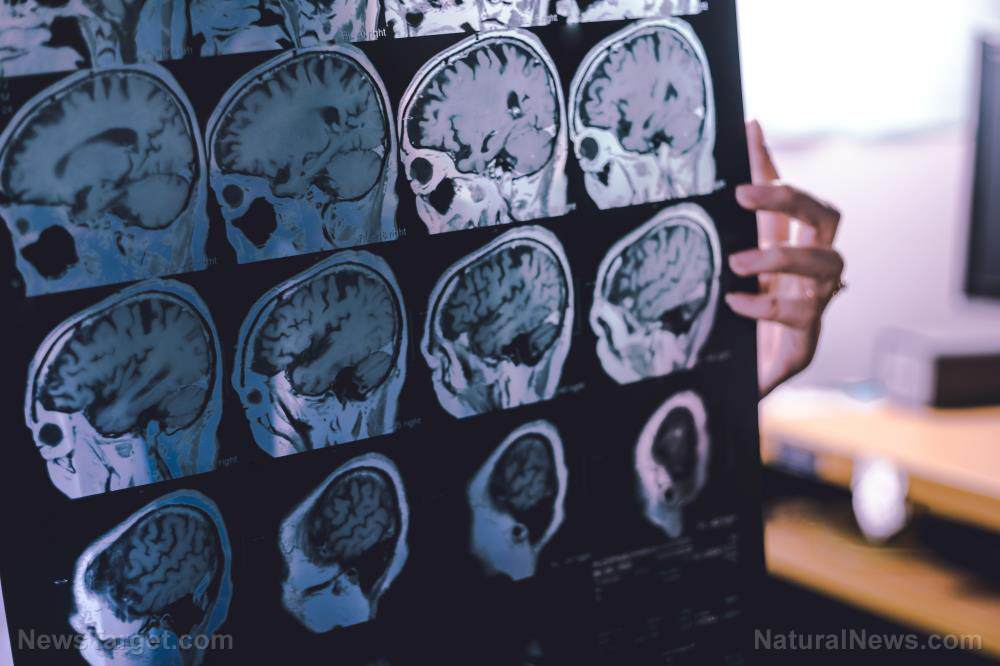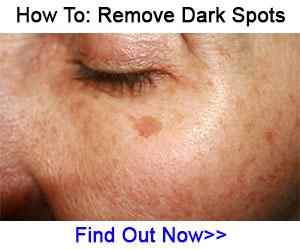Day: 11/18/2018
Just One Energy Drink Reduces Endothelial Function
The truth about lemon-honey-water concoction.
A Comprehensive Review of Health Benefits of Qigong and Tai Chi
How Stress Can Affect Your Blood Sugar Levels.
Tiny fish louse shows promise as a sensitive early indicator of metal pollution in freshwater

A common aquatic parasite might one day inform us about the presence of dangerous metals in drinking water. The fish louse (Argulus japonicus) is being tested as a biological early warning system for water quality, an article in Science Daily stated. Agricultural, industrial, and urban activities produce harmful chemicals and substances that can contaminate drinking water sources. Metal pollutants are the most insidious of the lot due to the difficulty in detecting their presence. A water sample is limited to telling you about the state of the water during the time of its taking. A fish can accrue toxins over a period of time, but it also moves those pollutants to a safer part of its body, making them harder to find. University of Johannesburg (UJ) researcher Annemariè Avenant-Oldewage suggested studying parasites found in fish. A parasite absorbs large amounts of the metals from its host, making the pollutants much easier to detect. “This means we can measure metals in them, long before it is possible to do that in fish or in water samples,” remarked Avenant-Oldewage. “So parasites can give us early warnings of pollution.” (Related: Fruit and vegetable peels can be used to remove water pollutants.)
A parasitical crustacean can warn you about toxins in drinking water
Initial candidates included the tapeworm and the monogean Paradiplozoon. The former is an internal parasite that required its host fish to be killed, while the latter is an external critter that targets only two species of yellowfish. Support our mission to keep you informed: Discover the extraordinary benefits of turmeric gummy bears and organic “turmeric gold” liquid extract, both laboratory tested for heavy metals, microbiology and safety. Naturally high in potent curcuminoids. Delicious formulations. All purchases support this website (as well as your good health). See availability here. The UJ researchers settled on the fish louse. A distant relation of shrimps that can thrive in both freshwater and saltwater, it swims in search of a host, latches onto the skin of the fish, and drinks the blood of its victim. Unlike Paradiplozoon, which is attached to the gills of the yellowfish, a fish louse can be removed from its host without harming the fish. These qualities make it perfect for testing water pollution levels UJ researcher Beric Gilbert caught mudfish and yellowfish in the Vaal Dam near Deneysville, South Africa. He removed Argulus from those fish, froze the crustaceans, added fluorescent stains, and examined the fish lice with a special microscope. Underneath the microscope, the metal pollutants would glow yellow. The higher the amount of such toxins, the more intense the fluorescent signal.
Fish lice used to test metal pollutant levels in water
Gilbert reported that the metal pollutants were concentrated in the tough exoskeleton of the fish lice. Male and female Argulus specimens absorbed roughly the same amount of the toxins. However, they stored it in different parts of their bodies according to their sex. In male fish lice, the metals were concentrated in the bottom part of their bodies. For female lice that carried eggs, the pollutants were present in the jelly layer that surrounded their future offspring. This jelly is very sticky, and it is used by the female to glue its eggs to the surface of various objects in its habitat. Avenant-Oldewage stressed the need for further experimentation with the fish lice before the animals can be considered accurate and reliable indications. “Our next step is to find out what mechanisms the lice use to protect themselves from metals,” she explained. “We also need to find out how they absorb metals in the first place.” Still, the UJ professor has high hopes for the little critters. If they pass muster, fish lice could become a new tool in the arsenal of water quality inspectors, helping to ensure that our drinking water is truly safe. Worried about the safety of your local water supply? Visit CleanWater.news to find out if you are in the clear. Sources include: ScienceDaily.com Journals.PLOS.org
What are the best foods to reverse symptoms of rheumatoid arthritis?

Rheumatoid arthritis is a debilitating disease that causes the joints, usually in the hands, to become inflamed and painful. It usually affects older individuals, although people as young as 30 can suffer from the disease. Like most autoimmune diseases, there is no cure for rheumatoid arthritis, but effectively managing it begins with eating the right food.
There is strong evidence supporting the link between food and the symptoms and effects of rheumatoid arthritis, which can include swollen joints, pain, and disability. In a study published in the journal Frontiers of Nutrition, researchers found that the state of a person’s microflora, the bacteria in the gut, as well as a leaky gut, all contribute to the occurrence of rheumatoid arthritis.
Changes in a person’s diet, they found, can also have pronounced benefits. For instance, fasting produces ketones that help suppress the pro-inflammatory molecules that cause pain in rheumatoid arthritis. Shifting to a plant-based diet has also been found to reduce immune reactivity to antigens found in certain foods.
The Mediterranean diet against rheumatoid arthritis
Because of the close link between rheumatoid arthritis and inflammation, it goes without saying that the best diet for sufferers is one that incorporates a lot of anti-inflammatory foods. When it comes to ingredients that fight inflammation, nothing does it better than the Mediterranean diet.
The Mediterranean diet places a lot of emphasis on fresh fruits and vegetables, high-quality proteins, and whole, unrefined carbohydrates. According to experts, this diet is so healthy that it gives over 1,500 mg of polyphenols every day. Polyphenols are natural compounds with anti-cancer, anti-diabetic, and anti-allergenic properties.
100% organic essential oil sets now available for your home and personal care, including Rosemary, Oregano, Eucalyptus, Tea Tree, Clary Sage and more, all 100% organic and laboratory tested for safety. A multitude of uses, from stress reduction to topical first aid. See the complete listing here, and help support this news site.
The Mediterranean diet is linked to a lower incidence of cardiovascular disease. One explanation for this is the liberated use of anti-inflammatory ingredients in almost any dish. Research has proven that many of the staples in this diet can help reduce the expression of pro-inflammatory compounds that may worsen rheumatoid arthritis. (Related: Study finds Mediterranean diet more effective cure for acid reflux than meds.)
Here are some of the pain-relieving and anti-inflammatory nutrients found in many of the foods under the Mediterranean diet:
- Anthocyanins – These plant pigments are found in blueberries, blackberries, and eggplants. They are powerful antioxidants that reduce oxidative stress and help prevent inflammation.
- Reservatrol – This antioxidant is abundant in grapes and red wine. Just like anthocyanins, it is a powerful antioxidant that helps protect the joints from inflammation and damage.
- Mangiferin – Another antioxidant, this time found in mangoes, mangiferin is so powerful that it has been described as having the ability to prevent the destruction of joints.
- Kaempferol – A compound found in grapefruit, kaempferol reduces the molecules that destroy the bones and the cartilage. The degradation of these parts is one of the main causes of pain of rheumatoid arthritis.
- Bromelain – This compound from pineapples is known for being a potent anti-inflammatory agent. Studies vouch for its efficacy as a pain reliever that does not cause any adverse effects.
- Oleic acid – Found in olive oil, this is one of the hallmark ingredients in the Mediterranean diet. This compound is known to provide therapeutic and protective effects from rheumatoid arthritis. When consumed by people without the condition, oleic acid can lower the risk of developing the disease.
- Curcumin – This compound is found in turmeric and is known for its antioxidant and anti-inflammatory effects. Some studies say that turmeric is best combined with ginger, yet another anti-inflammatory food, to maximize its ability to relieve rheumatoid arthritis pain.
- Probiotics – These “friendly” bacteria help promote digestion and improve the overall health of the gut. They can help prevent the negative effects of leaky gut and offset bad bacteria that may be causing damage to the body. Probiotics are found in fermented foods. Lactobacillus casei, for instance, is found in yogurt.
Learn which foods you need to eat to relieve body pain at Remedies.news.
Sources include:
Here are some natural interventions that slow down (and sometimes even reverse) cataracts

Regardless of your actual age, your eyes are often the last thing that stays young. However, this is only possible if you regularly follow a healthy diet.
Preventing and reversing cataracts
While cataracts are linked to poorer eyesight and even blindness, they are believed to be an inevitable part of aging. However, certain modifiable risk factors and natural interventions may help slow and even reverse this condition.
- Curcumin (turmeric extract) – There is significant data that confirms the health benefits of curcumin in the animal model of cataract formation. Study data revealed that curcumin, a highly therapeutic polyphenol that’s responsible for turmeric’s bright yellow color, can help prevent the formation of cataracts.
- Don’t use cholesterol-lowering statin drugs – For more than 20 years, data from animal research has determined that statin drugs are linked to cataracts. In the post-marketing surveillance of statin drug users, findings have shown that when taken, “either alone or in combination with other drugs which inhibit their metabolism,” the drugs increase the risk of cataracts in individuals who take them. An identified mechanism for the cataractogenic potential of these drugs is the fact that they can gain systemic distribution in the body, which happens when they pass through the blood-brain-barrier and enter the eye itself, specifically, the outer cortical region of the lens where cholesterol synthesis is critical. This mechanism is responsible for the damage in the lens. (Related: 8 Eye issues you can’t afford to ignore.)
- Lutein – According to a two-year double-blind, placebo-controlled pilot study, lutein can help improve visual function in individuals with age-related cataracts. Sources of lutein include egg yolks, kale, and marigold.
- Wheatgrass – Data from a 2005 study, which was titled “Aging reversibility: from thymus graft to vegetable extract treatment — application to cure an age-associated pathology” and published in the journal Biogerontology, wheatgrass can potentially reverse lens opacity linked to cataracts. Researchers explained that for the study, the lens opacity of old dogs who received oral dosages of wheatgrass for one month was measured before and after the treatment. The results revealed that there was a 25 to 40 percent reduction of lens opacity. The study authors posited that the wheat sprouts can help in “the recovery of age-related alterations and in treating age-associated pathologies” because they contain “regulatory acid peptides, a remarkable level of highly energetic phosphoric radicals and antioxidant molecules. These compounds in wheatgrass can potentially help reduce lens opacity.
What are cataracts?
Cataracts are dense and cloudy areas that can form in the lens of your eye. A cataract often develops when proteins in your eye form clumps that prevent the lens from sending clear images to your retina.
The power of the elements: Discover Colloidal Silver Mouthwash with quality, natural ingredients like Sangre de Drago sap, black walnut hulls, menthol crystals and more. Zero artificial sweeteners, colors or alcohol. Learn more at the Health Ranger Store and help support this news site.
The retina works by turning the light that comes through the lens into signals. The signals are then sent to the optic nerve, which is finally sent to the brain.
A cataract forms slowly and in time, it will interfere with your vision. You might get cataracts in both eyes, but they rarely form simultaneously.
Older people often develop cataracts. The National Eye Institute reports that more than 50 percent of individuals in the U.S. have cataracts or have undergone cataract surgery the moment they turn 80 years old.
Some common symptoms of cataracts include:
- Blurry vision
- Double vision in the affected eye
- Frequently needing changes in prescription glasses
- Halos surrounding lights
- Increased sensitivity to glare
- Trouble seeing at night
Some underlying causes of cataracts may include:
- Certain diseases (e.g., diabetes)
- The long-term use of steroids and other medications
- Radiation therapy
- Smoking
- Trauma
- Ultraviolet radiation
Don’t wait until your eyesight starts to worsen. Follow a healthy diet today to delay and maybe even reverse your cataracts.
Find more ways of taking care of your eyes naturally at Healing.news.
Sources include:
Study: Children with IBS found to be deficient in vitamin D

As many as one in six children suffer from irritable bowel syndrome (IBS) and its uncomfortable symptoms, including cramps, bloating, diarrhea and constipation. However, it appears that many children with IBS are also deficient in vitamin D.
A study published in PLOS ONE revealed that more than 90 percent of children with IBS lack vitamin D.
Being deficient in vitamin D likewise increases their risk for decreased bone mass, as having adequate vitamin D levels is important for the growth and development of bones of children.
In the study, the researchers analyzed the medical records of 55 children with IBS and compared their data to 116 healthy controls. The results revealed that one out of every two children with IBS is deficient in vitamin D compared to one out of every four healthy children and adolescents without IBS.
The study further looked into the association between vitamin D status and the presence of anxiety, depression, and migraine headaches that often come with IBS. Patients with IBS and migraine had significantly lower vitamin D levels compared to controls, which suggests that supplementing with Vitamin D might improve their headache symptoms.
With these findings, the researchers recommend pediatric IBS patients to monitor their vitamin D status and supplement with vitamin D if they are deficient in the vitamin.
More on vitamin D
Vitamin D helps the body absorb calcium, which is one of the building blocks of bone. Vitamin D also plays a role in the nervous, muscle, and immune systems. There are three ways to get vitamin D: through the skin, from food, and from supplements. Foods that are naturally rich in vitamin D include fatty fish like salmon and tuna, beef liver, raw cheese, mushrooms, and egg yolks. After being exposed to sunlight, the body naturally produces vitamin D. However, too much exposure to the sun can result in skin aging and skin cancer, which is why many people try to get their vitamin D from other sources.
Mother Nature’s micronutrient secret: Organic Broccoli Sprout Capsules now available, delivering 280mg of high-density nutrition, including the extraordinary “sulforaphane” and “glucosinolate” nutrients found only in cruciferous healing foods. Every lot laboratory tested. See availability here.
The amount of vitamin D a person needs every day depends on their age. The recommended amounts of vitamin D are the following:
- Birth to 12 months: 400 international units (IU)
- Children 1 to 13 years: 600 IU
- Teens 14 to 18 years: 600 IU
- Adults 19 to 70 years: 600 IU
- Adults 71 years and older: 800 IU
- Pregnant and breastfeeding women: 600 IU
Unfortunately, many are deficient in vitamin D. In the U.S. alone, approximately 42 percent of the population is vitamin D deficient. People can become deficient in vitamin D for various reasons. Some may not get enough vitamin D in their diet or have a malabsorption problem, in which they could not absorb enough vitamin D from food, while others may not get enough sunlight exposure. Some people may also have problems with their liver or kidneys that these organs cannot convert vitamin D to its active form in the body. Taking certain medicines can also interrupt the body’s ability to covert or absorb vitamin D. (Related: Vitamin D deficiency is widespread among U.S. population, expectant mothers are deficient and giving birth to deficient infants.)
As mentioned earlier, vitamin D is important for bone growth and development. Severe vitamin D deficiency can result in bone density loss, which can contribute to osteoporosis and fractures. Vitamin D deficiency can also result in many other diseases. In children, it can cause rickets, which is a rare condition that causes the bones to become soft and bend. In adults, it can result in osteomalacia, which causes weak bones, bone pain, and muscle weakness.
Read more news stories and studies on the importance of vitamin D by going to VitaminD.news.
Sources include:
Dementia or something else? See which health conditions that are often mistaken for the degenerative disease

(Natural News) The Alzheimer’s Association defines dementia as “a general term for loss of memory and other mental abilities severe enough to interfere with daily life.” However, over 40 percent of dementia diagnoses are actually wrong.
Here are seven health conditions that are often confused for dementia or Alzheimer’s.
- Side effects of artificial flavors, food colors, and sweeteners – These artificial additives are linked to dementia symptoms. Studies have determined that aspartame, an artificial sweetener, can impair cognitive function and cause memory loss.
- Inflammation from food allergies, low-level infections, Lyme Disease, and mold – Inflammation occurs when the body tries to get rid of toxic elements or organisms. Studies imply that neuroinflammation may cause mental disorders.
- Mercury or other heavy metal poisoning – Silver amalgam fillings contain 50 percent mercury that isn’t stable or inert. The mercury in filling “off-gasses, crosses the blood-brain barrier, and destroys neurons even without contact.” It’s hazardous to remove these fillings unless mercury-safe protocols are observed. Annual flu shots also contain heavy metals like aluminum and mercury.
- Nutritional imbalances and deficiencies – Deficiencies of folate (vitamin B9), magnesium, omega 3s, probiotics, selenium, vitamin B12, vitamin C, vitamin D, and other nutrients may cause the symptoms of Alzheimer’s and dementia. To address deficiencies, follow a balanced Mediterranean-style diet to slow down cognitive decline and reduce the risk of Alzheimer’s. Coconut oil can boost brain health while turmeric can improve your memory.
- Prescription medication side effects – Drugs, like pain medications, psychotropic drugs, statins (for lowering blood cholesterol), and sleep medication may severely disrupt cognition and increase the risk of dementia.
- Stress and stagnation or inactivity – Stress will elevate cortisol levels, and this causes inflammation. Inflammation then results in cognitive impairment, delayed healing time, hormone imbalances, hypertension, increased blood sugar levels, and susceptibility to disease. The body’s self-healing mechanisms requires the unimpeded flow of blood, lymph, and other fluids, which are improved with exercise. However, if you lead a sedentary lifestyle, cells in your body may shut down or become blocked, which can impede the natural healing process. Misdiagnosis linked to stress and inactivity often occurs in individuals with depression or alcohol addiction. (Related: The many ways stress makes you sick.)
- Thyroid and other hormonal imbalances – Individuals diagnosed with Alzheimer’s or dementia often have low T3 thyroid hormone levels, which aren’t measured in standard thyroid tests. At least 10 to 15 percent of residents in all nursing home residents are misdiagnosed due to low T3 levels.
https://www.brighteon.com/embed/5805404356001
Determining a cure for dementia
Experts from the University of California, Los Angeles (UCLA) and the Buck Institute for Research on Aging are collaborating on a new program that can help individuals with dementia, which may prevent misdiagnosis in patients with other conditions.
The research team reported that this is the first study of its kind and that it can prove that natural therapies may help slow the progress of dementia and even reverse it. Data from the paper, titled “Reversal of Cognitive Decline: A novel therapeutic program” and published in the journal AGING, revealed that out of the 10 participants diagnosed with dementia, nine “got their minds back.”
100% organic essential oil sets now available for your home and personal care, including Rosemary, Oregano, Eucalyptus, Tea Tree, Clary Sage and more, all 100% organic and laboratory tested for safety. A multitude of uses, from stress reduction to topical first aid. See the complete listing here, and help support this news site.
As people grow older, their fear of developing cognitive decline increases. Alzheimer’s disease is one of the several types of dementia. An individual with the disease may have problems with their behavior, memory, and thinking. The symptoms of Alzheimer’s tend to develop and worsen gradually until they interfere with simple daily tasks.
At least 5.4 million Americans have Alzheimer’s while 30 million people worldwide are diagnosed with the condition. Experts posit that by 2050, 160 million individuals around the world, including 13 million Americans, will have the disease. To date, Alzheimer’s, the third leading cause of death in the U.S., can’t be treated.
Dr. Dale Bredesen, the study’s lead author and a professor of neurology at The Mary S. Easton Center for Alzheimer’s Disease Research at UCLA, supposes that different factors affect the development of dementia and Alzheimer’s. For the study, Dr. Bredesen and his colleagues developed personalized and comprehensive protocols to address memory loss in 10 patients.
The study results were positive, and nine of the 10 participants showed improvement in their memories after being on the program for only three to six months. Out of the 10 patients, six patients have discontinued working or were struggling with their jobs when they joined the study. Once they joined the program, the six participants were able to work again or continue working with improved performance.
Five of the participants had memory loss linked to Alzheimer’s while the rest had amnestic mild cognitive impairment and subjective cognitive impairment. Only one patient with late-stage Alzheimer’s didn’t improve.
Doctors used a “systems approach” to treat the patients who joined the program. This “complex, 36-point therapeutic program” included:
- Brain stimulation
- Comprehensive changes in diet
- Exercise
- Sleep optimization
- Specific pharmaceuticals and vitamins
The program also involved other steps concerning brain chemistry. Dr. Bredesen concluded that even if the program is complex and involves many lifestyle changes, the protocol is worth implementing since its only side effect was “improved health and an optimal body mass index, a stark contrast to the side effects of many drugs.”
You can read more articles about natural cures for the different conditions mistaken as dementia at Health.news.
Sources include:
